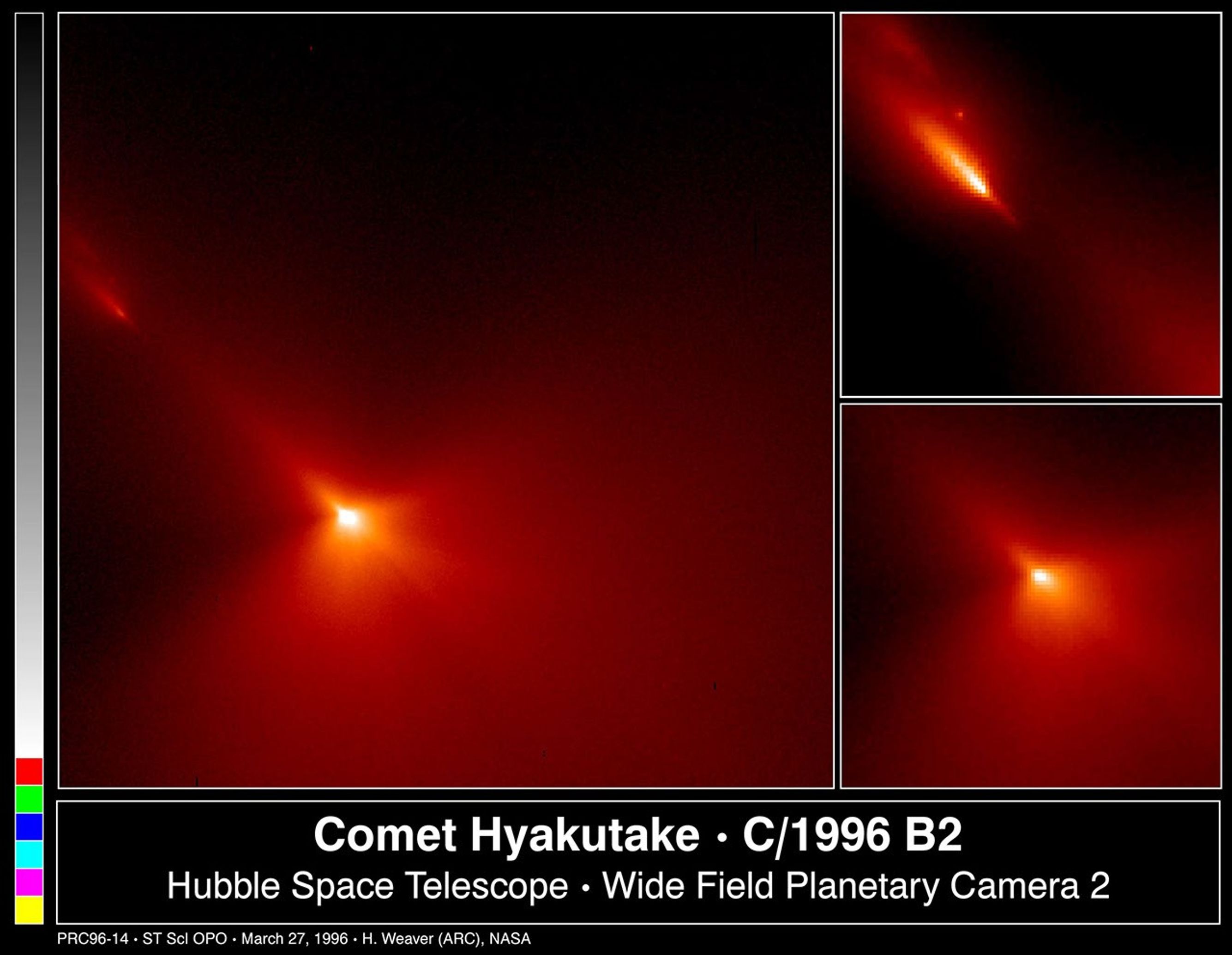1 min read
The Region Around the Nucleus of Comet Hyakutake

This image is 2070 miles across (3340 km) and shows that most of the dust is being produced on the sunward-facing hemisphere of the comet. Also at upper left are three small pieces which have broken off the comet and are forming their own tails.
Icy regions on the nucleus are activated as they rotate into sunlight, ejecting large amounts of dust in the jets that are faintly visible in this image. Sunlight striking this dust eventually turns it around and "blows" it into the tailward hemisphere. What might be another jet is emanating from the nightside of the nucleus, but this direction might be misleading due to the angle of the jet relative to our line-of-site.
- Object NameObject NameA name or catalog number that astronomers use to identify an astronomical object.Comet Hyakutake
- Release DateMarch 27, 1996
- Science ReleaseHubble Probes Inner Region of Comet Hyakutake
- CreditScience Release Credit: H. Weaver (ARC), HST Comet Hyakutake Observing Team and NASA
Related Images & Videos

Inner Region Near Heart of Comet Hyakutake
These are NASA Hubble Space Telescope images of comet Hyakutake (designated C/1996 B2), taken at 8:30 P.M.. EST on Monday, March 25 when the comet passed at a distance of only 9.3 million miles from Earth. Unlike most of the published images of Hyakutake, these Hubble images...

Close-Up of Nucleus of Comet Hyakutake
This expanded view of the near-nucleus region is only 470 miles (760 km) across. The nucleus is near the center of the frame, but the brightest area is probably the tip of the strongest dust jet rather than the nucleus itself. Presumably, the nucleus surface lies just below this...

Close-up of Fragments From Comet Hyakutake
This image shows pieces of the nucleus that apparently broke off and were first detected during ground-based observations on March 24. The Hubble image shows at least three separate objects that are probably made up of coarse-grained dust. Large fragments of the nucleus would...

Computer Processed Image of Nuclear Region of Comet Hyakutake
The image of the comet has been processed to emphasize the jets. The original image is divided by a perfectly circularly symmetric model coma. Regions where the coma conforms to the model are colored black, while strong jets appear white. The nucleus is approximately at the...
Share
Details
Claire Andreoli
NASA’s Goddard Space Flight Center
Greenbelt, Maryland
claire.andreoli@nasa.gov




























